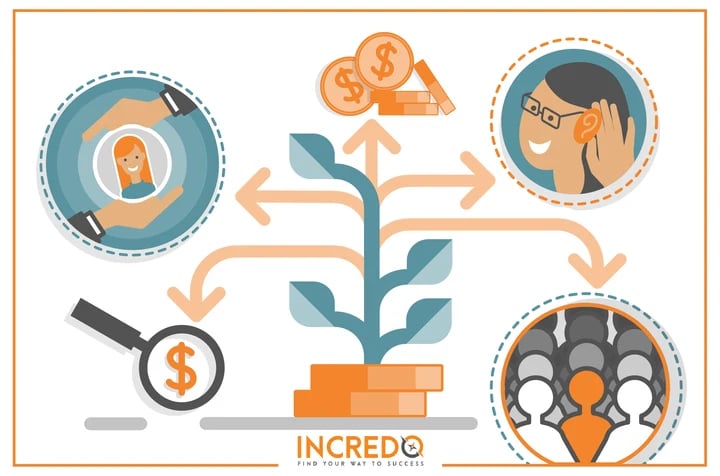
Just look at customer acquisition vs retention statistics. What do you see?
- When you acquire a new customer, it costs you 5x more than if you retained your existing customer.
- If you increase retention rate by 5%, you can increase your company’s profitability by up to 95%.
- Existing customers are 4-5x more likely to repurchase, refer your product and forgive your mistakes (source).
And the list goes on. But now you are asking a logical question. What if I am starting out a business and don’t even have leads, not to mention SaaS customer acquisition strategy? What if my customer base consists of only a few paying users and even if I retain all of them, I can’t grow? Acknowledging the power of customer acquisition for SaaS companies in any stage, we have combined 9 practical and working strategies so that you can help more users and grow more rapidly. Before that, let’s understand what “assets” should you have before reaching to customer acquisition stage and what are some common mistakes you should avoid.
What should you have before chasing down your prospects? (5 things)
We will answer this question with 4 words – online presence and reputation! No, we don’t say that product, team or business model don’t matter. We can talk about them later, now we focus on marketing. And let’s quickly expand on the answer and see what exactly you should create. User-friendly, informative, and attractive website – You will say – that’s too much for a website, we will say that’s the minimum. Your team should design your website in a way that users instantly understand which buttons are clickable, in which sections to find the necessary information and don’t wait for more 2-3 seconds until the page loads. Offers and high-performance landing pages – When your leads enter your sales funnel, the most exciting part begins. But you should offer something valuable so that visitors become a lead and then a customer: demo version of your software, free trial, downloadable resources. And landing pages are a must for collecting user data. Promise useful things so you get quality contacts and don’t waste time on junk leads. Feedback from your previous or existing customers – If you have partnered with giants like Amazon, Walmart or other prestigious companies, just insert their brand logos on your Case studies page. If your users are small and medium-sized enterprises, you can create a case studies deck elaborating who was your customer, what difficulties he was facing, how your software helped overcome difficulties. You can spice up your customer success stories with client testimonials. Social proof is super influential when you want to affect a buying decision. Diversity and quality of content – Promotional content is a must-have too but should draw up the smallest part of your whole content. Include videos, infographics, checklists alongside blog articles, guides, and eBooks. Even invitation to quizzes, upcoming webinars, product demos serve awesome sources of leads and make them stay longer on your site. Optimized pricing page – You might say that not all SaaS companies have their pricing plans available on their website. But just one page can save a visitor’s time and tell him how much you charge monthly, how much discount you offer in case of annual subscription or what’s your option for small (or growing) businesses. And don’t forget that buyer persona-focused and well-designed packages can deeply affect your prospects and encourage them to make a buying decision faster.
How to avoid mistakes while implementing your SaaS customer acquisition strategy?
 Are all mistakes equal? Of course not. But the ones listed below can be equally dangerous for your SaaS and impede its stable growth. To hold you back from possible misperceptions and undesirable outcomes, we want to share 6 cases that are common in business. #1 Being stingy and escape investing financial resources – Economical is not the same as stingy. You should be careful in spending money, provident in controlling your budget, and understand in which marketing channels you invest. That’s maybe your company’s strategy because you get funding from investors or because that’s what you consider a reasonable approach. But if you think that SQLs and opportunities will appear in your database without any spending, sorry, that’s not gonna work. Tip: See which marketing sources drive the highest number of leads & the most profitable customers and go on investing there. #2 Speaking about the company and product not customer’s challenges – You and your team may be proud of your SaaS company’s achievements, experience level, and quality of services. Your customers and prospects usually aren’t. They will be proud of themselves when they notice tangible improvements after choosing your software. Stories about your company and team are worth sharing and they help you build a strong brand. But when a prospect is contacting you or signs up for a free trial, that’s the moment you should stop caring about your story and start caring about your customer’s success. Tip: Ask questions to your prospects about their pain points and aspirations. Let them tell why they reached out to you and what they expect from you. Learn as many things as you can. #3 Focusing on product features not solutions – You can’t imagine how simple it is! Your users may not be familiar with a technical vocabulary and have difficulty in figuring out what is data export or integration (seems trivial but that’s real). Besides that, people love hearing how a particular feature works, not how it’s called. So instead of mentioning “Google Data Studio Integration”, you can mention that your users can bring your software and Google Data Studio together into one system and generate better reports (for example). Tip: Change the words, keep the meaning. Solutions and results are what your users want to see. #4 Thinking that everyone will convert – That’s confusion. Some users will not love your software (make sure to know why), some will prefer competitors for a cheaper price, others will stay with you for months and years. When you see new subscribers, new leads, new free trial signups, discover how they found you, analyze your data, do your best to convert them. But don’t get frustrated when you lose a sale – that’s not always your fault and that’s sometimes for the better. Tip: Learn from everyone, serve the ones who appreciate your software. #5 Starting without preparation – Remember we started our guide telling that you need a website. An awesome one. That’s what we are talking about now. Do you have landing pages to welcome your visitors after they click your ad? Have you provided enough information on your website? Do you have a customer success team to answer user queries? If you just run an ad but are not ready for the further developments, you will end up spending a huge budget and don’t get what you desired. Tip: Read the first section of this article #6 Treating all prospects equally – Who are your prospects? Free trial signups, ones who contact you, ones who provide their personal contacts and agree to connect with you. Do they have the same background, are they in the same stage of the sales funnel? No. Nurturing a lead from less to more quality one takes time and you should not send the same email sequence both to your free trial user and an eBook downloader. Tip: Respect the uniqueness, use a different language for prospects in different stages.
Are all mistakes equal? Of course not. But the ones listed below can be equally dangerous for your SaaS and impede its stable growth. To hold you back from possible misperceptions and undesirable outcomes, we want to share 6 cases that are common in business. #1 Being stingy and escape investing financial resources – Economical is not the same as stingy. You should be careful in spending money, provident in controlling your budget, and understand in which marketing channels you invest. That’s maybe your company’s strategy because you get funding from investors or because that’s what you consider a reasonable approach. But if you think that SQLs and opportunities will appear in your database without any spending, sorry, that’s not gonna work. Tip: See which marketing sources drive the highest number of leads & the most profitable customers and go on investing there. #2 Speaking about the company and product not customer’s challenges – You and your team may be proud of your SaaS company’s achievements, experience level, and quality of services. Your customers and prospects usually aren’t. They will be proud of themselves when they notice tangible improvements after choosing your software. Stories about your company and team are worth sharing and they help you build a strong brand. But when a prospect is contacting you or signs up for a free trial, that’s the moment you should stop caring about your story and start caring about your customer’s success. Tip: Ask questions to your prospects about their pain points and aspirations. Let them tell why they reached out to you and what they expect from you. Learn as many things as you can. #3 Focusing on product features not solutions – You can’t imagine how simple it is! Your users may not be familiar with a technical vocabulary and have difficulty in figuring out what is data export or integration (seems trivial but that’s real). Besides that, people love hearing how a particular feature works, not how it’s called. So instead of mentioning “Google Data Studio Integration”, you can mention that your users can bring your software and Google Data Studio together into one system and generate better reports (for example). Tip: Change the words, keep the meaning. Solutions and results are what your users want to see. #4 Thinking that everyone will convert – That’s confusion. Some users will not love your software (make sure to know why), some will prefer competitors for a cheaper price, others will stay with you for months and years. When you see new subscribers, new leads, new free trial signups, discover how they found you, analyze your data, do your best to convert them. But don’t get frustrated when you lose a sale – that’s not always your fault and that’s sometimes for the better. Tip: Learn from everyone, serve the ones who appreciate your software. #5 Starting without preparation – Remember we started our guide telling that you need a website. An awesome one. That’s what we are talking about now. Do you have landing pages to welcome your visitors after they click your ad? Have you provided enough information on your website? Do you have a customer success team to answer user queries? If you just run an ad but are not ready for the further developments, you will end up spending a huge budget and don’t get what you desired. Tip: Read the first section of this article #6 Treating all prospects equally – Who are your prospects? Free trial signups, ones who contact you, ones who provide their personal contacts and agree to connect with you. Do they have the same background, are they in the same stage of the sales funnel? No. Nurturing a lead from less to more quality one takes time and you should not send the same email sequence both to your free trial user and an eBook downloader. Tip: Respect the uniqueness, use a different language for prospects in different stages.
How to get SaaS customers: Our 8 tactics
 Finally we reached this section. Hope your way wasn’t tedious. Don’t be surprised but we are not going to recommend you running social media or PPC ads. Not because they are not inbound tactics or are worthless. The reason is that there is so much info separately about paids ads and now we want to concentrate on some content-driven approaches. #1 Get published on tech blogs – You can tell your startup and SaaS story on Mashable, Hackernoon, Indie Hackers, TechCrunch, The Verge and other websites with high traffic and large number of social media followers. What’s the best part about it?
Finally we reached this section. Hope your way wasn’t tedious. Don’t be surprised but we are not going to recommend you running social media or PPC ads. Not because they are not inbound tactics or are worthless. The reason is that there is so much info separately about paids ads and now we want to concentrate on some content-driven approaches. #1 Get published on tech blogs – You can tell your startup and SaaS story on Mashable, Hackernoon, Indie Hackers, TechCrunch, The Verge and other websites with high traffic and large number of social media followers. What’s the best part about it?
- You don’t talk about a side topic, hoping that readers will scroll down until the end of your article, see your company name and visit your website. You will be talking about your product from a broad perspective. You will answer questions like how you started your SaaS business, what motivated you to develop a new product, what was missing from the market and how your software helps people.
- Only developers follow these blogs? Please, no. If your software truly stands out with its functionality and value, you will receive a bunch of opportunities to promote your product via influencers and among real users. The aim of these publishing platforms is to introduce the latest achievements in the tech industry at first hand. If you have created something incredibly awesome, it will get noticed and your company won’t feel a shortage of customers.
#2 Leverage review websites – Producthunt, G2 Crowd, and Capterra are among the most reputable sites where you can list your software, gather customer reviews, and get found when someone is looking for a product similar to yours. How does it work? People go to Google and search for anything under the Sun, including software. These sites are miniGoogles envisaged for finding online tools. Be sure not only to create a profile and disappear but ask your previous and existing customers to leave feedback about you. Your future customers will notice your well-designed profile immediately, become interested in your company and get ready to using your services. Further read: Top Software Review Sites (and how to turn customer reviews into cash) #3 Join Facebook groups – Startup product launches, SaaS growth hacks, SaaS revolutionaries. Top 3 Facebook groups where you can
Further read: Top Software Review Sites (and how to turn customer reviews into cash) #3 Join Facebook groups – Startup product launches, SaaS growth hacks, SaaS revolutionaries. Top 3 Facebook groups where you can
- Answer users’ questions when they ask for a specific tool (that tool may be yours and you can promote it!)
- Share information about your software and introduce it (even share your Product Hunt launch page and get upvotes)
- Place links from your website in the comments section to answer a user’s question
- Get advice from other SaaS owners, marketers and build new relations.
As you can see, you can use these communities not only for reaching potential customers but also increasing brand awareness, getting traffic, sharing your knowledge and positioning yourself as a thought leader. P.S. 1 Don’t forget to read the rules before joining the groups. P.S. 2 Overall, 20 000+ FB users are members of these 3 groups. Not a small number. #4 Launch an affiliate program – We want to describe this approach with a real-life example. Robbie Richards runs a blog on online marketing strategies. He wrote an article called How to Find High-Value Competitor Keywords (Actionable 5-Step Guide) and recommends the readers to try SEMrush. He clearly mentions: “Disclaimer: This article does contain affiliate links. If you purchase a tool through one of my links I will receive a small commission at no additional cost to you.”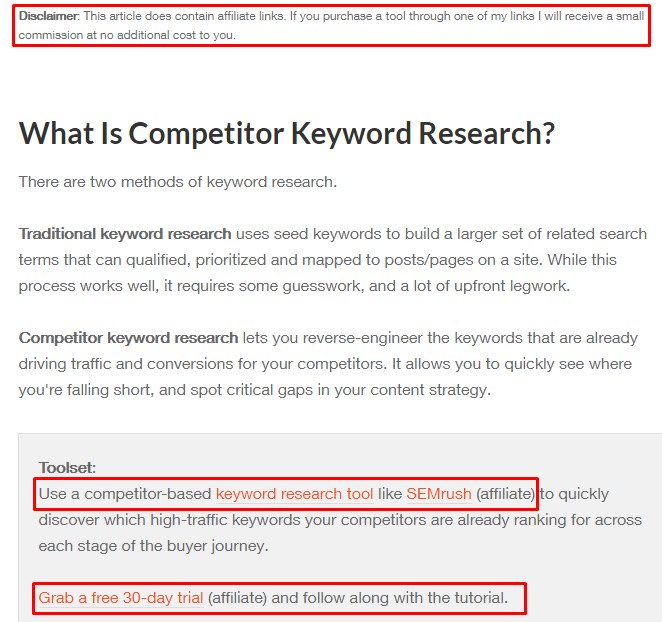 You can reach out to a suitable candidate and ask him for partnership. The benefits?
You can reach out to a suitable candidate and ask him for partnership. The benefits?
- You will not pay any fees until someone subscribers to your software
- Your partner will promote his article via social networks and email
- You will increase your brand awareness and the chances of your product to reach the right audience.
#5 Encourage users to refer – Word-of-mouth is a powerful strategy for at least 3 reasons:
- Creates higher brand awareness
- ncreases your customer lifetime value
- Reduces SaaS customer acquisition cost
And you should incentivize your existing users to refer your product to their friends and colleagues. How to do that – with a referral program. How to reward your users – offer them (and their friends too) a 10% discount or reward with points. For example, FreeAgent, accounting software, is ready to provide a 10% discount to those who refer this tool. #6 Reach out to an influencer – If you offer translation software, you should find a blogger or vlogger who writes (speaks) about the translation industry. Whether he is just a blogger or translator, he may become an invaluable source for high-quality leads and, consequently, customers. Maybe you will pay your influencer for writing an article about your software or recording a video about it, may be you are going to pay him per post or per lead who signs up for your free trial. No strict rules, you both are going to define them! For example, Mari Smith is a social media expert and thought leader. In the screenshot below, you will see that she is partnering with Wave.video, an online video maker tool. That’s a quite relevant choice as her followers want to learn new tips and tools to perform better on social media. And an online video maker tool can definitely help them create highly engaging posts.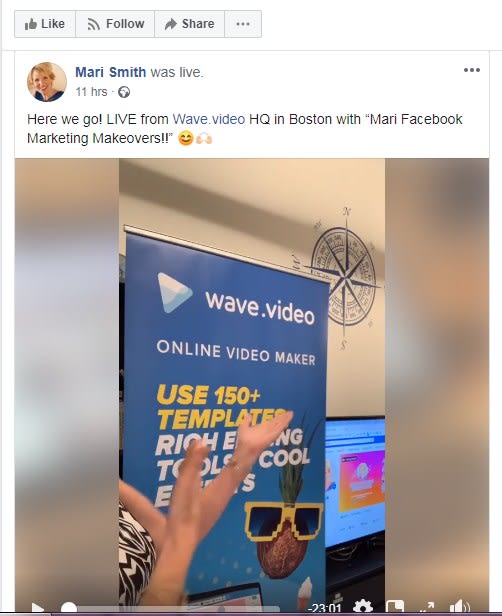 Further read: SaaS influencer marketing: The Essential Guide to Grow Your B2B SaaS Startup #7 Find and answer Quora questions – Let us share a secret with you. Quora works best maybe for online tools and software (if you use it for promotional purposes, not for fun or leisure). What’s your product? CRM tool? Email marketing tool? Product management tool? Live chat tool? People are asking about all this on Quora and you can usually come up with multiple questions requiring the same answer. See how many questions are out there only about customer success tools.
Further read: SaaS influencer marketing: The Essential Guide to Grow Your B2B SaaS Startup #7 Find and answer Quora questions – Let us share a secret with you. Quora works best maybe for online tools and software (if you use it for promotional purposes, not for fun or leisure). What’s your product? CRM tool? Email marketing tool? Product management tool? Live chat tool? People are asking about all this on Quora and you can usually come up with multiple questions requiring the same answer. See how many questions are out there only about customer success tools.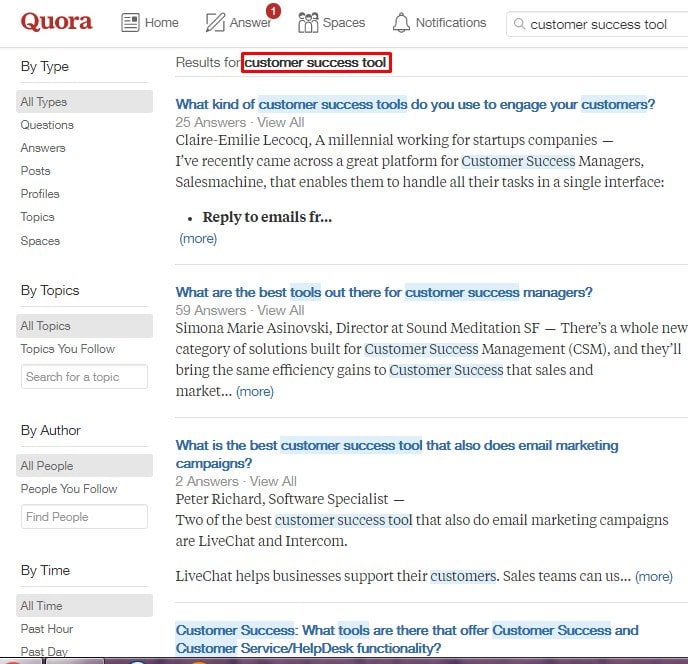 #8 Invest in blogging, optimize for speech recognition – Voice searches are gaining popularity. Website owners are inserting speech recognition tools on their blog so a machine reads the text out loud for visitors (maybe they are lazy or want to “read” your guide while doing something else). Despite these strong changes in user behavior, writing new blog posts and updating old ones remains a priority. Target long-tail keywords (especially questions keywords), publish regularly and make your visitors’ life simple with modern technologies (you are SaaS, you know the power of it).
#8 Invest in blogging, optimize for speech recognition – Voice searches are gaining popularity. Website owners are inserting speech recognition tools on their blog so a machine reads the text out loud for visitors (maybe they are lazy or want to “read” your guide while doing something else). Despite these strong changes in user behavior, writing new blog posts and updating old ones remains a priority. Target long-tail keywords (especially questions keywords), publish regularly and make your visitors’ life simple with modern technologies (you are SaaS, you know the power of it).
Wrapping up
You already know what strategies you can implement to reach your SaaS customers, what are some common mistakes made by business owners and what are some essential online elements you should build to attract a considerable amount of new paying users. Which strategies have been the most successful for your SaaS? What would you recommend other SaaS owners? Let us know in the comments section below…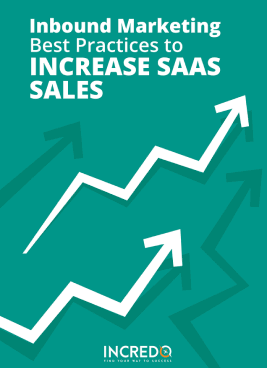 INBOUND MARKETING BEST PRACTICES TO INCREASE SAAS COMPANY’S SALES DOWNLOAD YOUR E-BOOK
INBOUND MARKETING BEST PRACTICES TO INCREASE SAAS COMPANY’S SALES DOWNLOAD YOUR E-BOOK

December 21, 2020
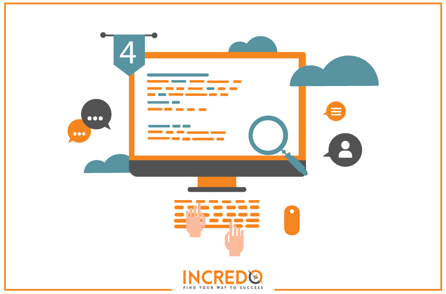

Comments